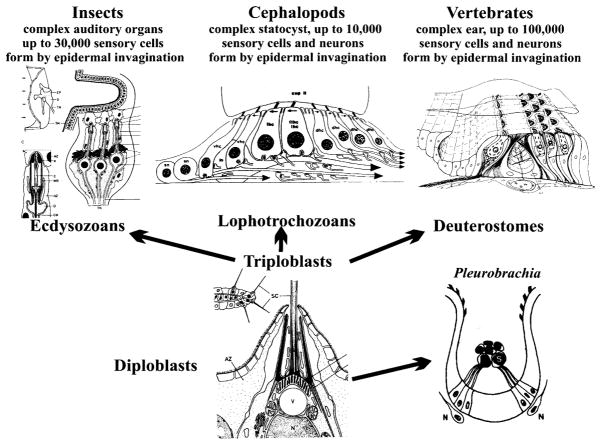Figure 3.
The evolution of sensory cells from simple single cells in the epidermis of diploblastic animals (bottom center) to complex multicellular organs in all three major radiations of triploblasts and in certain diploblasts is shown. Note that among ecdysozoans, insects have complex auditory receptors that consist of sensory cells with axons projecting to the central nervous system. Among lophotrochozoans, cephalopods have equally large statocysts with sensory cells with an axon, as well as sensory cells innervated by specialized sensory neurons. Vertebrates also have complex sensory organs that consist exclusively of sensory hair cells that are innervated by sensory neurons that derive from the same otocyst. bHLH genes that regulate sensory cell development in insects (atonal) and hair cell development in vertebrates (Aton1) can be experimentally interchanged. It remains to be seen, however, whether diploblasts have a conserved atonal-like bHLH gene, which may be the basis of the cell fate commitment toward a mechanosensory cell.

